NIL
San Diego State's Marko Sipila joins Ole Miss in transfer portal move

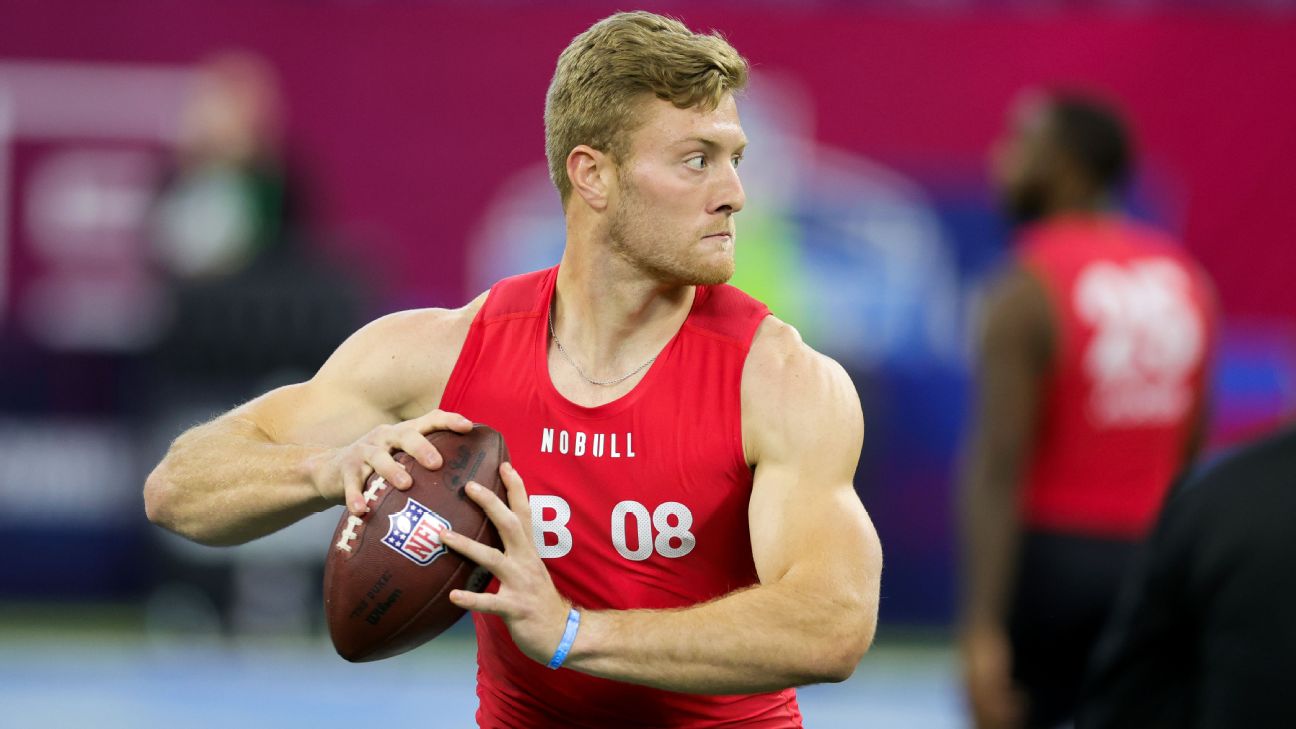

OXFORD, Miss. — Marko Sipila’s baseball journey has always been about timing.
As the 6-foot-4 right-hander packed up his San Diego State jersey for the last time, he did so knowing Ole Miss would not just be another college chapter.
For both Sipila and the Rebels, this transfer comes at a moment when the stakes could hardly be higher.
Sipila, who officially committed to Ole Miss this week, brings with him a season’s worth of steady results. In 2025, he posted a 3.91 ERA across 71.1 innings, racking up 74 strikeouts to just 25 walks.
His arsenal, anchored by a fastball that sits between 90 and 93 miles per hour and complemented by a splitter, slider, and curve, has made him one of the most sought-after pitchers in the NCAA transfer portal.
“I’m excited for this next opportunity and to be part of something special in Oxford,” Sipila said in a statement announcing his commitment.
The move is not just about numbers, though.
For Ole Miss, coming off a tumultuous period of roster turnover, Sipila’s arrival signals a return to stability.
Coach Mike Bianco and his staff have been navigating a portal era that has seen as many as 2,000 college baseball players seeking new homes nationwide, reshaping rosters and expectations in real-time.
“It’s been really good,” hitting coach Mike Clement told the Ole Miss Spirit. “We feel we have a pretty solid chance to get a good baseline and core back from last year’s team.
“So, a little bit different from the chaos of last season, where you felt you were building it a little more from the ground floor. We’re in a better spot with what we feel like we have.”
Sipila’s path to the SEC has been anything but linear. He began his collegiate career at Colorado-Colorado Springs before transferring to San Diego State, where his development accelerated.
Beyond his regular-season numbers, he impressed in summer ball for the Yarmouth-Dennis Red Sox of the Cape Cod League, recording a 2.84 ERA and nine strikeouts in just three appearances.
Scouts have noted his poise and pitchability as reasons why he could quickly become a weekend starter in Oxford.
The Rebels’ offseason overhaul has been less dramatic than a year ago, but it’s still significant.
Departures include pitchers Riley Maddox, Connor Spencer, Mason Nichols, and several others who either graduated or entered the portal themselves.
Outfielders like Ryan Moerman and Mitchell Sanford are also moving on, forcing the staff to act decisively. Sipila is now the fifth addition via the transfer portal, joining a group that includes left-hander Grant Richardson from Grand Canyon and outfielder Daniel Pacella from Illinois State.
The NCAA’s transfer portal has changed the calculus for programs across the country. With a 45-day window for entry after the regular season, teams are forced to quickly evaluate talent and fit.
While the portal can create opportunities, it also leaves many players without a new home. Only about 45 percent of transfers found a school last cycle. For Sipila, landing at Ole Miss is both a testament to his talent and a reflection of how the transfer market now shapes college baseball’s balance of power.
Mike Bianco, entering his 25th season at the helm, has not shied away from the challenges or opportunities presented by the portal.
“The portal has proven huge as we try to get back to Omaha,” Bianco told local media earlier this month. “The key is not just bringing in talent, but the right kind of talent. We’re looking for guys who can handle the pressure of the SEC and who want to compete at the highest level.”
Sipila fits that mold. His strikeout-to-walk ratio, nearly three to one, suggests the kind of command that can play in a league notorious for patient hitters and deep lineups.
His ability to throw four pitches for strikes gives Bianco’s staff flexibility in how they deploy him, particularly with several rotation spots up for grabs heading into fall workouts.
For Sipila, the transition to the SEC is as much about embracing the moment as it is about proving himself. Born in Red Bank, New Jersey, and raised in Minnesota, he’s navigated the country’s baseball geography in search of the right fit.
“I’ve learned to adapt at every stop,” Sipila said in a phone interview after his visit to Oxford. “The competition in the SEC is what every college player wants. The crowds, the energy, the chance to play for something bigger, it’s why I’m here.”
Ole Miss fans, still not far removed from the euphoria of a national championship run in 2022, are looking for signs that the program’s brief downturn was just a blip.
The addition of Sipila and other portal standouts has fueled optimism that the Rebels can once again contend in the loaded SEC West.
As one longtime supporter put it, “pitching wins championships, and we just got a lot better on the mound.”
There are still questions to answer before opening day. The Rebels’ defense will need to jell after a series of departures in the outfield and middle infield.
The lineup, while returning several key pieces, must replace the production of hitters who have moved on. But with Sipila anchoring a revamped rotation, the path back to the postseason is suddenly much clearer.
The broader story, though, is not just about Sipila or Ole Miss. It’s about how the transfer portal is redefining college baseball.
Coaches now spend as much time recruiting established college players as they do high school prospects. Roster continuity is harder than ever, and programs are forced to adapt or fall behind.
“You have to be nimble,” Bianco said at a recent SEC coaches meeting. “The game is changing, and we have to change with it.”
As summer turns to fall and rosters take shape, Sipila’s journey from San Diego to Oxford stands as an example of what’s possible in the new era.
For Ole Miss, it’s a chance to reset expectations and remind the baseball world that talent, no matter where it comes from, can still find a home (and the spotlight) in Oxford.
NIL
NCAA reaches settlement over NIL lawsuit with Tennessee, other states – The Daily Beacon

The NCAA has reached a settlement in principle with several states, including Tennessee, surrounding a lawsuit of name, image and likeness. Tennessee attorney general Jonathan Skrmetti announced the settlement in a statement Friday.
The lawsuit began when Skrmetti sued the NCAA alongside Virginia attorney general Jason Miyares. It was filed Jan. 31 of last year following an NCAA investigation into Tennessee and Spyre Sports. Prior to the lawsuit, Tennessee athletic director Danny White and chancellor Donde Plowman responded in statements against the NCAA.
A federal judge gave the plaintiffs a preliminary injunction on Feb. 23, temporarily suspending the NCAA’s regulations on name, image and likeness. Nine days later, the NCAA decided to pause the investigation into Tennessee athletics and Spyre Sports.
“We’ve been fighting hard to protect Tennessee student-athletes,” Skrmetti said in a statement. “Last year, we blocked the NCAA’s unlawful enforcement against Tennessee students and schools, and now this settlement in principle lays the groundwork for a permanent solution.”
Per the statement, the settlement will allow students to retain rights from NIL and not allow the NCAA to ban NIL recruiting procedures. Finalization of the settlement is scheduled for March 17.
Prior to the most recent investigation, the NCAA investigated the Tennessee football program, finding several violations from September 2018 to November 2020. The violations, numbering in their hundreds, resulted in significant punishment against Tennessee football.
Required reading
Why Donde Plowman sent a letter to NCAA President Charlie Baker
State of Tennessee, NCAA conclude preliminary injunction hearing, expect decision in ‘short order’
Injunction granted in Tennessee vs. NCAA, court freezes NIL rules
Breaking down the state of Tennessee’s suit against the NCAA
Who is Jonathan Skrmetti? The Tennessee attorney general who isn’t scared
States of Florida, New York, District of Columbia join Tennessee’s antitrust suit against NCAA
Why adding Florida, New York, District of Columbia will benefit Tennessee in antitrust suit against NCAA
NIL
James Madison vs. Oregon prediction: Odds, picks, best bet for College Football Playoff
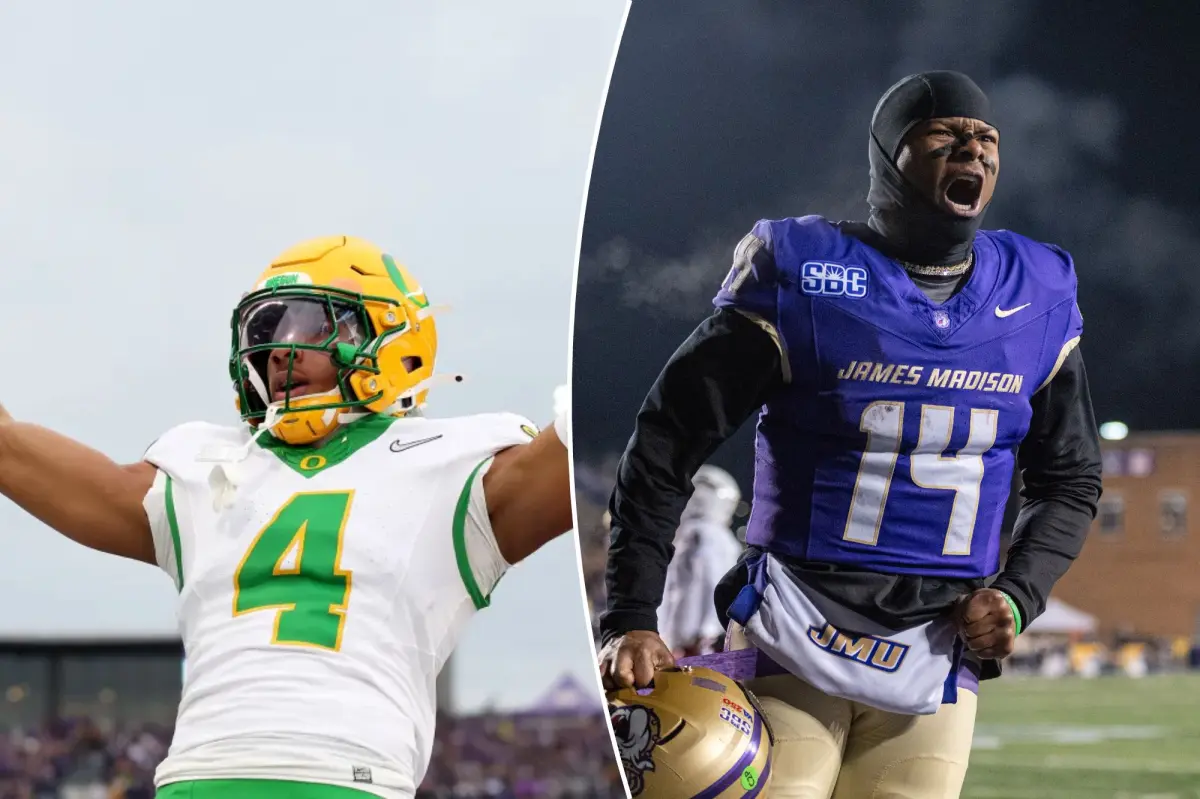
James Madison vs. Oregon. In the College Football Playoff. These are the weirdest of times.
When the field expanded to 12 teams, it meant we were eventually going to get a matchup like this.
On one side of the field stands Oregon, a juggernaut backed up by one of the most robust NIL budgets in the country, and on the other, James Madison, playing in just its fourth season at the FBS level.
James Madison now heads across the country to Eugene as 21-point underdogs, hoping to pull off one of the most profound upsets in the history of the sport.
James Madison vs. Oregon odds, prediction
The Dukes were unquestionably one of the best teams in the Group of 5 this season, but they also ranked 121st in strength of schedule, with their only loss coming against their lone Power 4 opponent — Louisville.
You can only beat the teams in front of you, however, and James Madison did that in style in 2025.

The Dukes had an average margin of victory of 21.5 points, went 8-5 against the spread and won eight games by at least three possessions.
James Madison hit the 45-point mark five times, including against a couple of decent sides in Old Dominion and Texas State.
That kind of scoring power certainly makes the Dukes a tough out as a 21-point underdog, especially since James Madison excels at controlling the clock.
Only two teams (Army, Miami) average more time of possession per game than the Dukes, who lean into the run more than just about anybody outside of the Service Academies.
Betting on College Football?
Whether or not the Dukes will be able to pull that kind of game plan off against an elite Oregon defense remains to be seen, but it bodes well for James Madison’s chances to cover a large spread that it is committed to the run. That should keep the clock moving, which is a great thing for underdog bettors.
Oregon is likely going to prove to be too much for James Madison over the course of 60 minutes, but the Dukes are uniquely set up to be a thorn in the Ducks’ side on Saturday night.
The Play: James Madison +21 (-110, bet365)
Why Trust New York Post Betting
Michael Leboff is a long-suffering Islanders fan, but a long-profiting sports bettor with 10 years of experience in the gambling industry. He loves using game theory to help punters win bracket pools, find long shots, and learn how to beat the market in mainstream and niche sports.
NIL
Freshman Ebuka Okorie scores season-high 32 to lead Stanford over Colorado 77-68

PHOENIX (AP) — Freshman Ebuka Okorie scored a season-high 32 points to help Stanford beat Colorado 77-68 on Saturday night in the Hall of Fame Series at Mortgage Matchup Center.
Okorie made 6 of 13 shots with two 3-pointers and 18 of 21 free throws for the Cardinal (10-2). He entered averaging 21 points per game.
Benny Gealer hit three 3-pointers and scored 13, adding three steals for Stanford in a third straight victory. Chisom Okpara scored 11 but made only 3 of 12 shots and 4 of his 10 free throws.
Barrington Hargress had 16 points and six assists to pace the Buffaloes (10-2). Sebastian Rancik totaled 14 points and eight rebounds, while reserve Isaiah Johnson scored 11.
Rancik and Hargress both had nine points by halftime to help Colorado build a 35-33 lead.
Hargress followed his 3-pointer with a fastbreak layup, and the Buffaloes took their largest lead at 29-22 with five minutes left. Gealer had 3-pointers on both sides of one by Ryan Agarwal, and the Cardinal used a 9-2 run to tie it 33-all. Felix Kossaras scored with 1:37 remaining for the final points of the half.
Gealer hit a 3-pointer to tie it 37-all, sparking a 9-0 run for a six-point lead, and the Cardinal led for the final 18:20. Oskar Giltay scored to give Stanford its largest lead at 65-49 with six minutes left.
Up next
Stanford: Hosts Cal State Northridge on Saturday.
Colorado: Hosts Northern Colorado on Dec. 28.
___
Get poll alerts and updates on the AP Top 25 throughout the season. Sign up here. AP college football: https://apnews.com/hub/ap-top-25-college-football-poll and https://apnews.com/hub/college-football
NIL
Jesse Palmer calls for changes to limit G5 schools’ inclusion amid Ole Miss blowout of Tulane

As many feared would happen, No. 6 seed Ole Miss completed dominated No. 11 seed Tulane 41-10 in its College Football Playoff First Round matchup Saturday night.
For weeks, college football fans have called for change to the CFP, which would keep Group of Five teams out. At the minimum, in still a rule that would prevent two Group of Five teams from making the College Football Playoff, which Tulane and James Madison both did this season.
The first game featuring a GO5 team was completely uncompetitive, as Ole Miss led 41-3 late into the fourth quarter until Tulane finally found the end zone with four minutes remaining. No. 12 seed James Madison will clash with No. 5 Oregon Saturday night in Autzen, providing one last chance for these such teams to prove they belong.
Late in the Ole Miss/Tulane broadcast Saturday night, ESPN’s Jesse Palmer pleaded with the sport of college football to limit GO5 schools’ inclusions into the Playoff.
“Listen, I’m all about inclusivity and I’m fine with one Group of Five team making it into the 12-team (Playoff),” Palmer said. “That team deserved to be Tulane. They won the best Group of Five conference and beat Duke, the eventual ACC Champion. But as a fan, I want to see the other 11 teams that have a legitimate chance of winning a National Championship.”
Jesse Palmer wants to cap the GO5 participation at just one team
“I think having seen Notre Dame in person this year, I think you (referring to broadcast partner Joe Tessitore) and I both feel that Notre Dame had a legitimate chance to compete for a National Championship,” Palmer continued. “I don’t know if James Madison really does. As we keep talking about and keep working towards getting the 12 best teams in the Playoff, I do think you have to cap the Group of Five participation at just one team.”
In the first iteration of the 12-team College Football Playoff last season, the Mountain West Conference’s Boise State earned the GO5 bid into the bracket. Unlike this season, the top four ranked conference champions earned a First-Round bye, before it was changed. The Broncos clashed with No. 6 Penn State in their Quarterfinals matchup and were blown out 31-14, adding even more fuel to the fire in the argument.
If James Madison is to get blown out Saturday night, chatter regarding the subject matter will continue to grow louder and louder. You can now add Jesse Palmer‘s name to the list of public figures calling for change to the College Football Playoff.
NIL
Oregon vs. Texas Tech set for Orange Bowl: Preview and odds for CFP quarterfinal
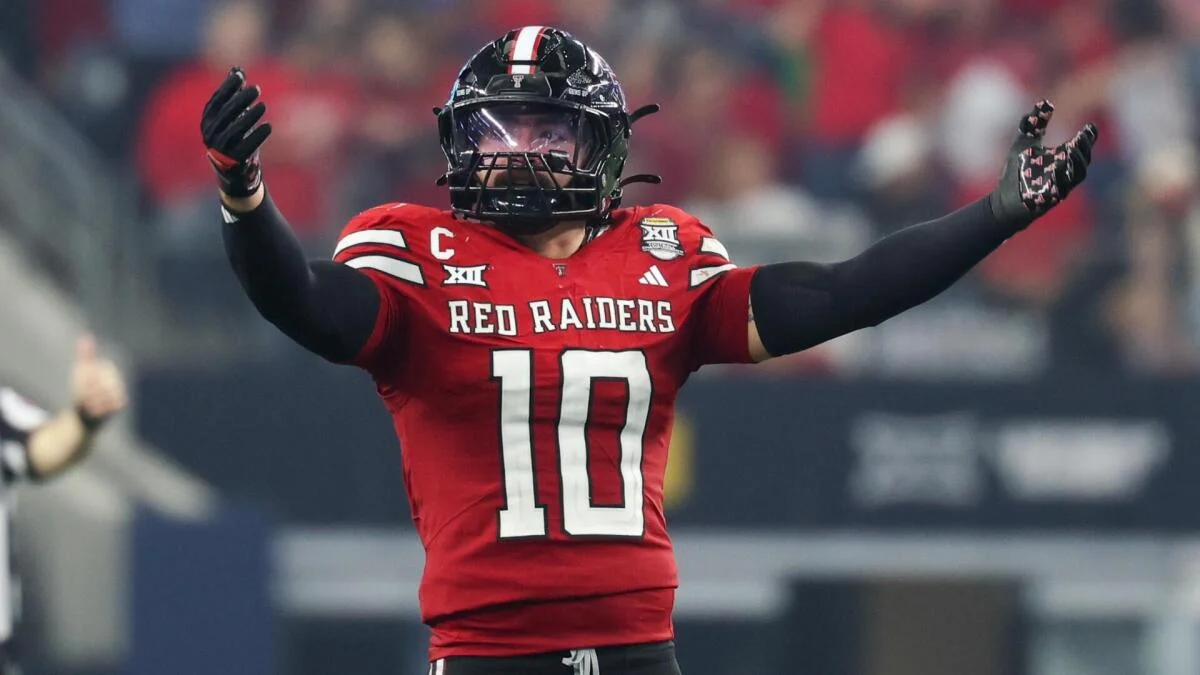
The quarterfinals of the College Football Playoff are upon us, which means the four top seeds will finally get their postseason campaigns underway after a lengthy break following conference championship weekend.
No. 4 Texas Tech waited the longest to officially learn its quarterfinal opponent. But given that No. 5 Oregon entered the first round as a three-touchdown favorite over No. 12 James Madison, the Red Raiders likely got a head start preparing for the Ducks. Despite a spirited effort from the Dukes, Oregon overwhelmed the Sun Belt champions to set up the expected Orange Bowl showdown with Texas Tech — a matchup that could be one of the best games of the entire Playoff.
There’s a fitting symmetry to the pairing. Oregon, once college football’s “new money” program, will face the NIL era’s fastest riser in Texas Tech. The Ducks have established themselves as a consistent national contender over the past two decades, while the Red Raiders poured major resources into their program and surged to the top of the Big 12 this season as a result.
In many ways, Oregon represents a blueprint for how a program like Texas Tech can build sustained excellence. On New Year’s Day in Miami, the Red Raiders will get a chance to show they’ve already closed that gap.
For two programs long defined by high-powered offenses, the defining trait of this season has been dominant defense. Both teams have been excellent offensively — they’re both top 10 nationally in scoring — but their defenses have been the engines of their success. As a result, both offenses will face a significant challenge trying to move the ball consistently in this matchup.

What to know about Texas Tech
The Red Raiders earned the No. 4 seed by riding one of the nation’s best defenses to a dominant season in the Big 12. Aside from a midseason stumble at Arizona State, Texas Tech bullied its way through the conference, including a pair of blowout wins over BYU that cemented a top-four finish in the CFP rankings and secured a first-round bye.
Texas Tech’s defense ranks among the elite nationally, finishing third in scoring defense at 10.9 points allowed per game — trailing only top seeds Indiana and Ohio State. All four of the Red Raiders’ AP All-America selections came on the defensive side of the ball, including first-team honors for linebacker Jacob Rodriguez and EDGE David Bailey.
That star-studded unit will be tasked with slowing an Oregon offense that found its rhythm in the second half of the season and finished ninth nationally in scoring at 38.2 points per game. When the Ducks have the ball, it will be a true strength-on-strength battle. Oregon ranked 14th in rushing offense at 218.4 yards per game, while Texas Tech finished No. 1 nationally in rushing defense, allowing just 68.5 yards per game.
Oregon faced two other top-10 defenses in 2025 and failed to crack 21 points against either — scoring 18 in a win over Iowa and 20 in a loss to Indiana. The Iowa game was played in a downpour, but Indiana held the Ducks to 81 rushing yards on 30 carries. Expect Texas Tech to study that film closely in hopes of replicating what the Hoosiers did up front with their own ultra-talented front seven.
The biggest question for Texas Tech is whether its No. 2 scoring offense can hold up against Oregon’s stout defense. The Red Raiders overwhelmed the Big 12, but in their biggest games — against Utah and BYU twice — the defense led the way. Oregon represents another step up in competition, and Behren Morton, Cameron Dickey and the rest of the offense will need to bring their A-game.

What to know about Oregon
The Ducks did what was expected in a convincing first-round win at home, overpowering James Madison to set up a heavyweight clash in the Orange Bowl.
The challenge for Oregon will be creating space for its playmakers against a hard-hitting Texas Tech defense. Against James Madison, the Ducks enjoyed a clear speed advantage and exploited it throughout the game. The margins will be far tighter against the Red Raiders.
Oregon typically sets up the pass with the run, but that approach may be flipped against Texas Tech. Quarterback Dante Moore could be asked to shoulder more of the load early, using the passing game to loosen the Red Raiders’ front and open opportunities on the ground.
Saturday night’s game against James Madison saw Oregon get almost anything it wanted offensively. That will not be the case on Jan. 1, but Moore looked sharp throwing the ball. His confidence and willingness to push it downfield will be critical if the Ducks’ offense is going to have success against Texas Tech.
Defensively, the question is whether Oregon can create negative plays to knock Texas Tech off schedule. The Red Raiders would prefer to lean on the run game and avoid putting too much on quarterback Behren Morton. Despite a strong overall defensive season, Oregon ranked near the bottom nationally in havoc metrics, finishing with 57 tackles for loss (113th in FBS) and 23 sacks (81st).
Texas Tech’s offense stalled early at times against Utah and BYU, largely due to backfield pressure. While both defenses eventually wore down after spending extended time on the field, the blueprint for slowing the Red Raiders is clear: generate pressure and speed up Morton’s decision-making.
Oregon has been steady defensively all season, but it may need to be more creative in manufacturing the disruption necessary to give Texas Tech problems.
Odds below via FanDuel Sportsbook.
Orange Bowl odds, prediction
I expect a highly competitive game in Miami between the Red Raiders and Ducks as I think there are a lot of similarities between these two teams. Both defenses are excellent and when at their best, the offenses can put up points in bunches. To me this game comes down to which offense can create more explosive plays in a variety of ways, because both defenses are so talented and so good at adapting in-game. I give the Ducks the edge in that department thanks to Moore and see him leading Oregon to a bit of quarterfinal revenge after last year’s dud in the Rose Bowl. PICK: Oregon -1.5
NIL
After Signing Extension To Stay At Arizona State, Kenny Dillingham Sounds Off
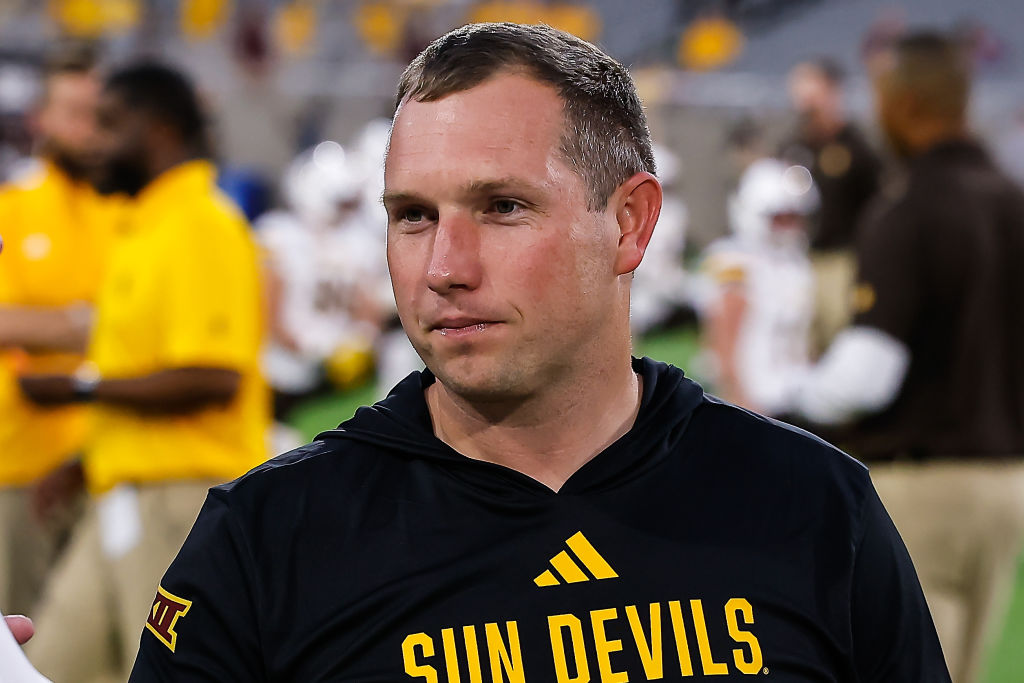
If Sun Devil fans want to stay competitive in the Big 12, they better pony up the big bucks.
Arizona State Sun Devils head coach Kenny Dillingham has enjoyed quite a successful tenure so far in Tempe.
After his first year in which his squad put up a dismal 3-9 record, Dillingham went to work and completely flipped the fortunes of the ASU football program, posting a 19-7 record over the last two seasons, including a Big 12 championship and a College Football Playoff berth.
For his efforts, Dillingham recently received a massive extension and larger salary pool for his assistants, fending off the circling Michigan Wolverines in the process.
Though I’m sure Dillingham is happy to be staying in the Valley of the Sun and is thrilled with his new paycheck, the 35-year-old head coach was recently chatting up the local media and stumping for a different kind of payday.
It’s easy to look at Dillingham saying these things and see him as greedy or ungrateful, but he’s spot on, and the sad reality is that this is the new norm for the sport of college football.
The name of the game is roster building and retention, and if you want to compete in the Power 4 leagues and consistently make the College Football Playoff, you had better pony up some serious dough.
A sum like $20 million might seem like a ridiculous demand, but that’s a pretty reasonable number in today’s NIL arms race.
The Texas Techs of the world are going to do whatever it takes to win, and if Dillingham wants the Big 12 to run through Tempe and not Lubbock, then he is doing the right thing by lobbying for some of those billionaires living in Arizona to stroke a check.
It’s disgusting and gross and goes against everything that college football used to be about, but this junk isn’t going anywhere, so you either adapt or die.
Dillingham is adapting, now we will see if the big money players will follow his lead.
Because if they don’t, things could get very dark very soon for the Sun Devils.
-

 Motorsports2 weeks ago
Motorsports2 weeks agoSoundGear Named Entitlement Sponsor of Spears CARS Tour Southwest Opener
-

 Motorsports2 weeks ago
Motorsports2 weeks agoDonny Schatz finds new home for 2026, inks full-time deal with CJB Motorsports – InForum
-

 Rec Sports2 weeks ago
Rec Sports2 weeks agoBlack Bear Revises Recording Policies After Rulebook Language Surfaces via Lever
-

 Rec Sports2 weeks ago
Rec Sports2 weeks agoHow Donald Trump became FIFA’s ‘soccer president’ long before World Cup draw
-
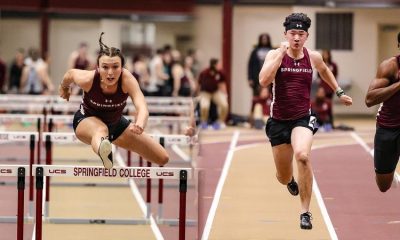
 Sports3 weeks ago
Sports3 weeks agoMen’s and Women’s Track and Field Release 2026 Indoor Schedule with Opener Slated for December 6 at Home
-

 Rec Sports2 weeks ago
Rec Sports2 weeks agoDavid Blitzer, Harris Blitzer Sports & Entertainment
-

 Motorsports2 weeks ago
Motorsports2 weeks agoJR Motorsports Confirms Death Of NASCAR Veteran Michael Annett At Age 39
-

 Motorsports2 weeks ago
Motorsports2 weeks agoRick Ware Racing switching to Chevrolet for 2026
-
Sports2 weeks ago
West Fargo volleyball coach Kelsey Titus resigns after four seasons – InForum
-
Sports2 weeks ago
Elliot and Thuotte Highlight Men’s Indoor Track and Field Season Opener




































